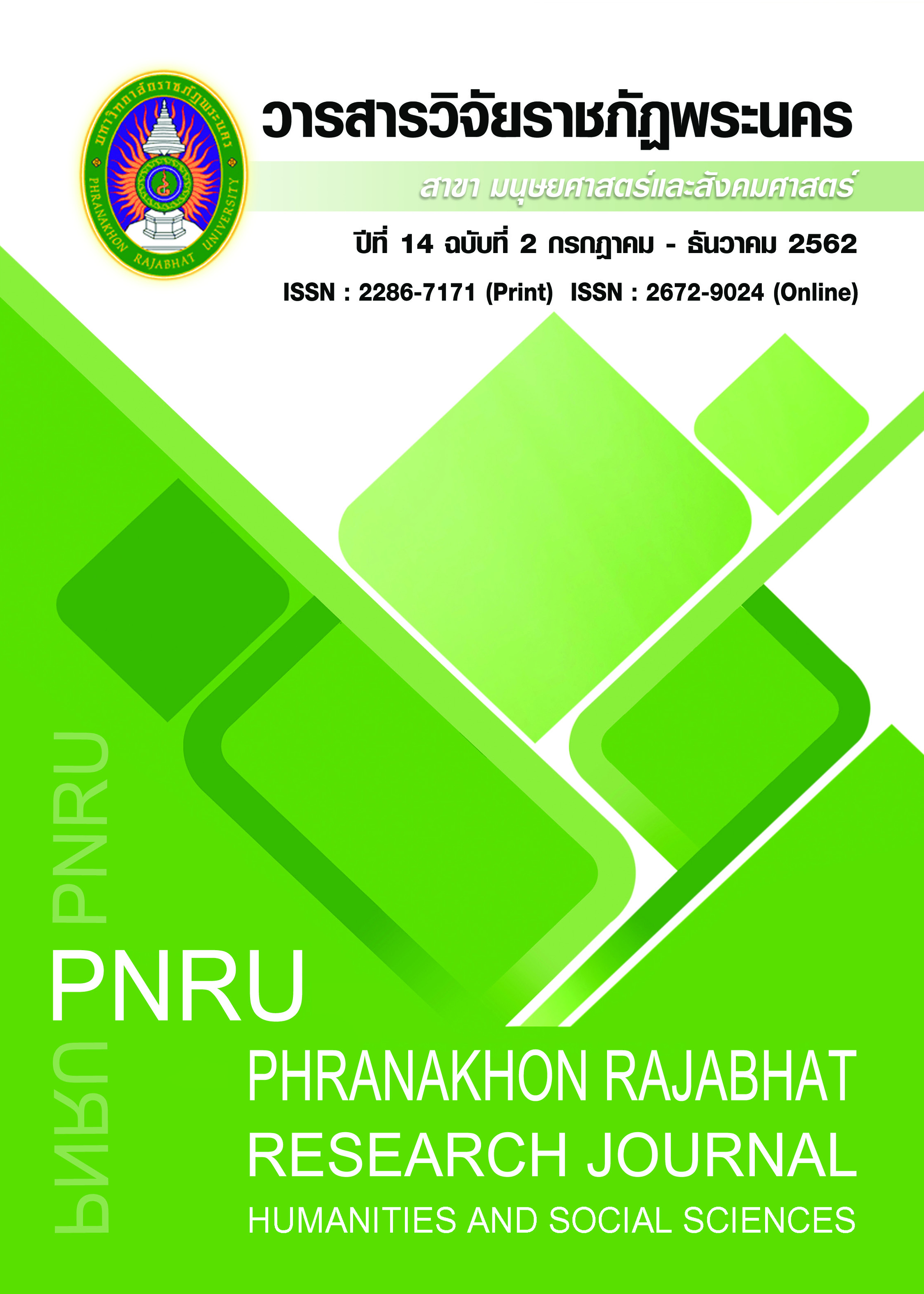THE CULTURAL EXISTENCE OF INDIGO DYED WISDOM: A CASE STUDY OF INDIGO DYEING IN PHANNA NIKHOM, SAKON NAKHON PROVINCE
Main Article Content
Abstract
This article aims to study the existence, the process of adaptation and creation of indigo dyed cloth in Phanna Nikhom, Sakon Nakhon Province from past to present time. The research findings reveal that the indigo dyed cloth was the intellectual heritage of the ancestors. It was the local wisdom comes with the weaving of the fabric and culture. They were produced indigo dyed cloths for household used only. The social conditions have been changed and effected to the next generation. They did not produce and use the indigo dyed clothes in their daily life, and with this reason, the indigo dyed clothes were extinct from the local community.
In 1992, the indigo dyed cloth was revived and became popular again. The producers were selling the indigo dyed products to the government officials in order to preserve and promote the indigo products which was one of the well-known products of the Sakon Nakhon, especially, the localization and globalization factors as a result of the indigo dyed cloth was well-known as a cultural product of many communities in Sakon Nakhon because of its uniqueness. It is the one of income source for the local community. They focused on production to those needed and responded of niche consumer market by using inherited from the foremother’s knowledge. Theirs cultural products consisted of procedures were following as; pattern creation, creative cultural products and creation of story. The indigo dyed cloth was the symbol of outstanding identity for the local group. It also represented the particular characteristics of the agricultural way of life, nature and belief of the group.
Article Details
Each publish articles were copyright by Phranakorn Rajabhat University
Any contents which appeared in each articles in the journal were authors personal opinion. It did not relate to Phranakorn Rajabhat University and other instructors in the university. Each authors would take responsibility on their articles. If there are any mistake, the authors will take responsibility themselves
References
Daengjai, P. (2016). Interview on April 29, 2016. (in Thai)
Department of Intellectual Property. (2015). The Geographical indication registration of natural indigo dye of Sakon Nakhon. (Photocopied document) (in Thai)
Hanamoraset, T. (2003). The Dynamics of local cloth weaving: a case study of Pha Sin Tin Jok of \Ban Na Thalay, Amphoe Laplae, Uttaradit Province. Master’s Thesis (Thai Studies), Naresuan University. (in Thai)
Kaewsong, B. (2012). Locality and community-based research of cultural ecology. pp 12-13. (Photocopied document) (in Thai)
Khiaoraksa, A. & Saithong, A. (2010). The project to bring wisdom to the children. Sakon Nakhon: Sakon Nakhon Rajabhat University. (in Thai)
Khotphrom, P. (2016). Interview on March 13-15, 2016. (in Thai)
Kuljittiwirach, S. (2012). Knowledge Management of Indigo Dye Cloth Weaving in Ban Non-Sa-at, Na Ngua Sub-District, Nawa District, Nakhon Phanom Province. Master of Agriculture (Agricultural Extension and Development), Sukhothai
Thammathirat Open University. (in Thai)
Prangwatthanakul, S. & Seamen, P. (1999). Tai Lue textiles: cultural reproduction, folklore with Thais – Tai: Incorporation of Folklore. Articles in a Social Context. Bangkok: Faculty of Arts, Chulalongkorn University. (in Thai)
Samutthakhup, S. & Kittiarsa, P. (Editors). (1993). Culture and society in Isan of Thailand: Cultural Anthropology articles. Nakhon Ratchasima: Anthropological Museum of Northeastern Project, Institute of Social Technology of Suranaree University of Technology Nakhonratchasima. (in Thai)
Yampochai, K. (2007). Role of cultural capital and community economic development in Thambon Takook, Amphoe Ban Tak, Changwat Tak. Social Department, Interdisciplinary Graduate. Kasetsart University. (in Thai)


